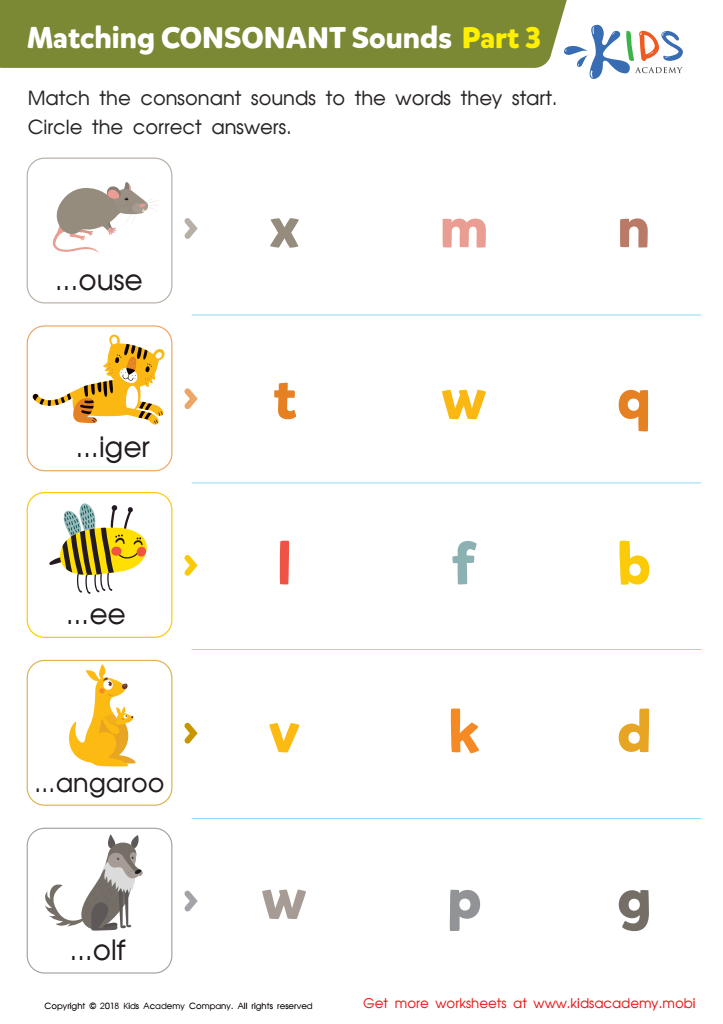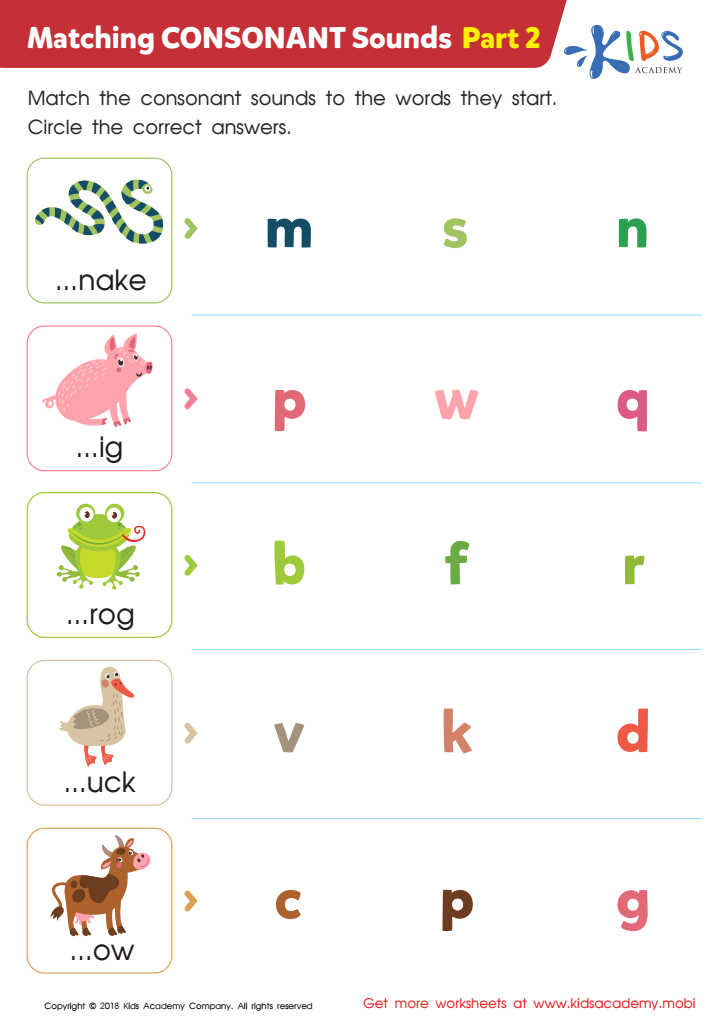Phonics recognition Normal Consonants Worksheets
3 filtered results
-
From - To
Enhance phonics recognition with our engaging Normal Consonants Worksheets! Designed for early learners, these printable worksheets bolster letter and sound association through fun and interactive activities. Children will explore consonant sounds while developing critical reading skills, enabling them to recognize letters in different contexts. Each worksheet is crafted to keep young minds engaged, promoting skill mastery through repetition and reinforcement. Ideal for classroom use or homeschooling, our resources support educators and parents in building a strong foundation for literacy. Empower your child’s learning journey today and watch their confidence in phonics soar! Visit our site to access these valuable resources now.


Where Is the Digraph? Worksheet


Matching Consonant Sounds: Part 3 Worksheet


Matching Consonant Sounds: Part 2 Worksheet
Phonics recognition, particularly of normal consonants, is crucial for early literacy development in children. Understanding consonants forms the backbone of phonics, which aids children in decoding words. When parents and teachers focus on teaching normal consonants, they provide children with the tools to sound out words, leading to better reading skills.
Mastery of consonant sounds helps children as they progress to more complex phonetic patterns and enhance their spelling abilities. In addition, familiarity with consonants supports vocabulary development; as children learn to read, they encounter new words, which enriches their language comprehension.
Furthermore, phonics recognition contributes to children's confidence in reading. A strong foundation in consonants allows early readers to tackle literature independently, promoting a love for reading and learning. This vital skill directly links to future academic success, as proficient readers tend to excel across subjects.
Lastly, partnerships between parents and teachers can enhance phonics instruction. By working together, they can create a supportive learning environment, ensuring that children receive consistent reinforcement at home and school. In summary, recognizing normal consonants is a cornerstone of literacy that parents and teachers should prioritize to foster children’s educational journey.
 Assign to My Students
Assign to My Students








